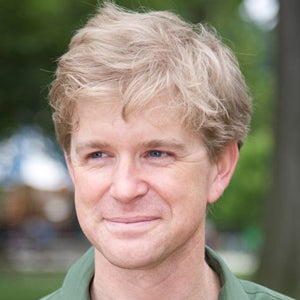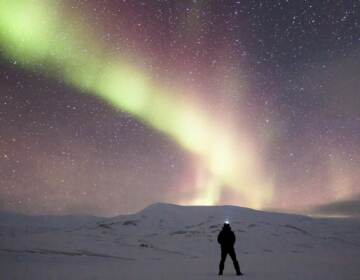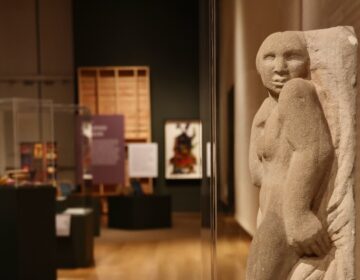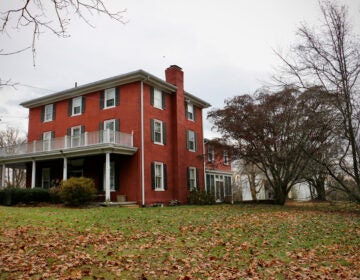Explore your place in the universe inside ‘Super/Natural’ at Doylestown’s Michener Museum
Stained-glass artist Judith Schaechter built a cathedral for a congregation of one inside the Michener Art Museum.
From Philly and the Pa. suburbs to South Jersey and Delaware, what would you like WHYY News to cover? Let us know!
The Michener Art Museum in Doylestown, Pennsylvania, now has a tiny cathedral with room to inspire awe for just a single person at a time. “Super/Natural” is a built structure whose stained glass dome and walls are about the size of a large phone booth.
“I was raised an atheist, so I was thinking about how I could create a space of contemplation and spirituality for me,” said Philadelphia artist Judith Schaechter, “and everyone else like me. There’s a lot.”
“Super/Natural” was conceived during an artist residency at the Penn Center for Neuroaesthetics, which studies the neurological and cognitive effects of beauty, art and the built environment.
The center’s areas of research include biophilic spaces, or built environments designed to bring occupants into a closer relationship with nature, and tracking psychological and physiological phenomena when a person encounters art.

“It’s not brain surgery,” Schaechter said. “It’s where they study wellness and beauty and how they intersect.”
The exhibition at the Michener is the debut of the Schaechter’s dome, surrounded by her earlier stained glass pieces as lightboxes hung on the gallery walls.
Her ornately built wooden structure topped with a geodesic dome is adorned with a series of stained glass panels depicting tiers of nature, from the dark underground at the bottom, to surface flora and fauna in the middle, to flying birds in the dome spiraling toward a vanishing point.
A stool in the center is for a single visitor to sit inside and ponder translucent scenes of an invented cosmos.
“We often say, sort of deridingly, ‘Oh, he thinks he’s the center of the universe,’ but we also talk about being centered as being mentally healthy,” she said. “It’s about being centered.”
The painted glass depicts natural growth and decay, including blooming flowers supported by soil filled with rot and decomposition. An underground opossum, for example, is dead and succumbing to insects.
Schaechter is not an artist of natural science. Her flowers, animals and insects have little to no resemblance to the real world. All of her painted elements are born of her imagination.
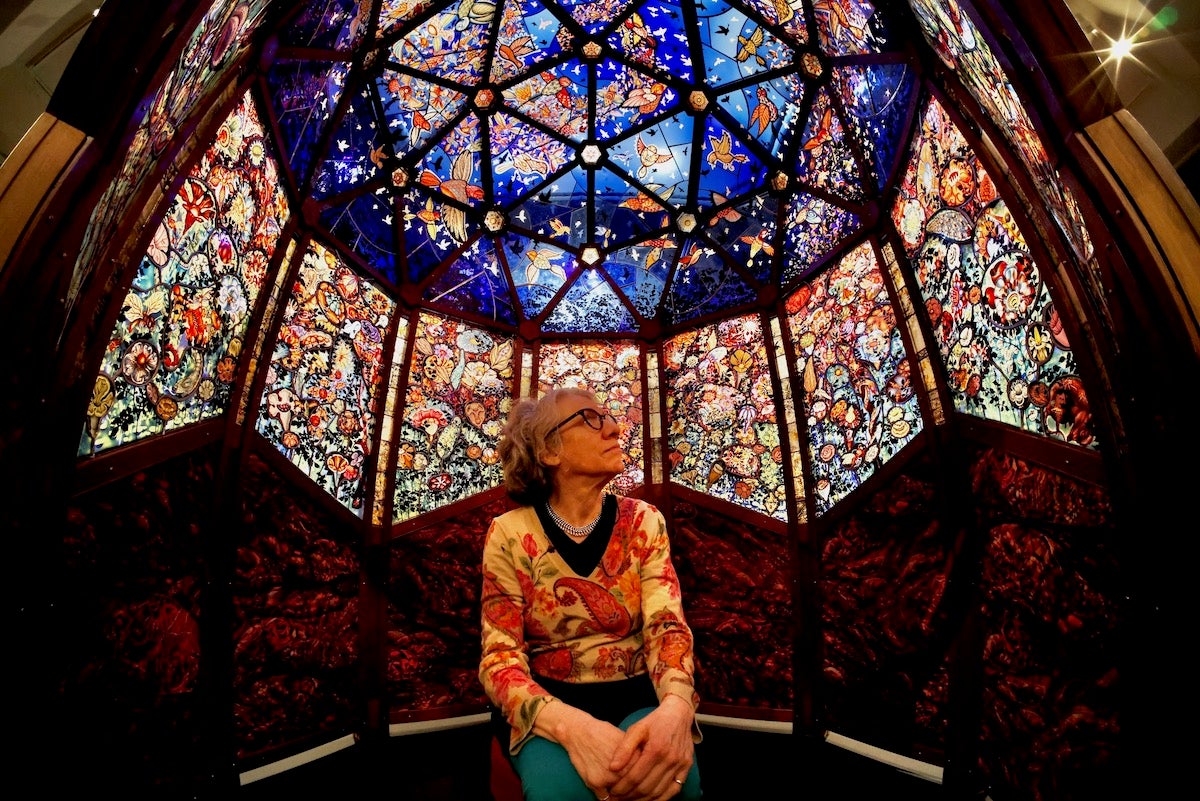
The dome, in a sense, acts like a cranium.
“I do not experience nature very much. I don’t have a car and I live in South Philly, so I don’t see a lot of nature,” she said. “It’s more about a human being imagining nature than it is actual nature. It’s a brain thinking about nature.”
To elicit the feeling of awe with “Super/Natural,” Schaechter turned to the 2023 book “Awe: The New Science of Everyday Wonder and How It Can Transform Your Life” by Dacher Keltner, a professor of psychology who is the director of the Social Interactions Lab at the University of California, Berkeley.
In his book, Keltner describes eight scenarios that can trigger awe, including beauty, courage, expanses of nature and collective action.
“Awe in the abstract is about when we encounter vast mysteries,” Keltner told WHYY’s “The Pulse.”
“You feel connected to larger systems around you, larger collectives, ideas, pieces of music, ecosystems,” he said. “Parts of the brain called the default mode network, which are really where the ego is activated, tend to quiet, they deactivate. We get activation of oxytocin, which is a neuropeptide that helps you connect to others.”
Much of Schaechter’s work is about isolation. Many of the pieces on the walls around the dome feature a lone figure who appears to be pondering the cosmos where “despair becomes hope and darkness becomes inspiration,” according to the wall text.
Curator Laura Igoe said the dome, the largest and most complex work the artist has attempted, is a culmination of Schaechter’s exploration of the self in relation to the cosmos.
“Judith is really interested in thinking about nature as something that is both vibrant and beautiful,” she said. “But also dangerous and maybe threatening.”
“Super/Natural” will be on view until Sept. 14. The opportunity for visitors to sit inside the dome are limited to 11 a.m. to 3 p.m. on the days the museum is open.

Get daily updates from WHYY News!
WHYY is your source for fact-based, in-depth journalism and information. As a nonprofit organization, we rely on financial support from readers like you. Please give today.


